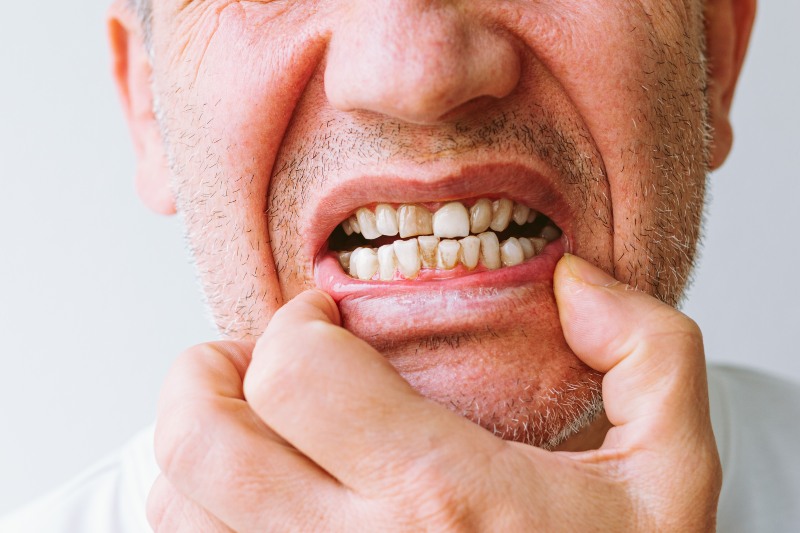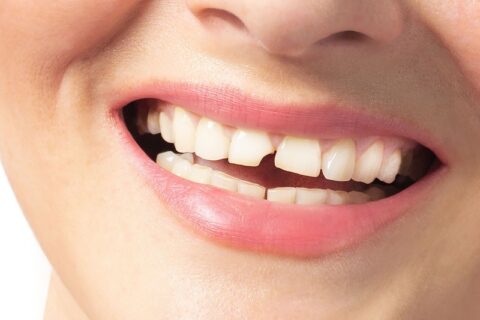Weak Enamel: The Truth about Tooth Erosion
Tooth enamel is the hardest substance in the human body, but it isn’t invincible. Over time, certain foods, drinks, and habits can wear it down, leading to sensitivity, discoloration, and an increased risk of cavities. At Matthew J. Cavendish, DDS, we help patients in North Phoenix and Paradise Valley protect their enamel and prevent further damage. Understanding the causes, signs, and treatment options for tooth enamel erosion can help you take steps to maintain a healthy smile for years to come.

What Is Tooth Enamel?
Tooth enamel is the outermost layer of your teeth. This strong, protective barrier shields the softer layers underneath from decay and damage. While enamel is durable, it does not contain living cells, meaning once it wears away, it cannot regenerate naturally. This is why teeth with weak enamel are more vulnerable to decay, fractures, and sensitivity.
What Causes Enamel Loss?
Enamel loss, or tooth erosion, occurs when acids wear down the tooth’s surface. This process weakens the structure of the tooth, making it more prone to cavities and damage. Several factors contribute to enamel loss, including diet, medical conditions, and daily habits.
Factors Leading to Tooth Erosion
There are many reasons why tooth enamel erosion happens. Some of the most common include:
- Acidic Foods & Beverages – Citrus fruits, soft drinks, and sports drinks contain high levels of acid, which can wear down enamel over time.
- Acid Reflux & Other Medical Conditions – Gastroesophageal reflux disease (GERD) and other digestive issues bring stomach acids into the mouth, contributing to enamel erosion.
- Dry Mouth (Xerostomia) – Saliva helps neutralize acids in the mouth. When saliva production is low, acid lingers on the teeth, leading to enamel breakdown.
- Brushing Too Hard – Aggressive brushing with a hard-bristled toothbrush can wear away enamel over time.
- Grinding Teeth (Bruxism) – Frequent grinding and clenching put excess pressure on teeth, contributing to enamel erosion and fractures.
Harmful Foods and Drinks That Erode Enamel
Some foods and drinks are more damaging to tooth enamel than others. To keep your teeth strong, limit the consumption of:
- Citrus fruits like oranges, lemons, and grapefruits
- Soft drinks (regular and diet)
- Energy and sports drinks
- Vinegar-based foods like pickles
- Sugary snacks and candies
If you do consume these foods, rinse your mouth with water afterward and wait at least 30 minutes before brushing to prevent further damage.
Signs & Symptoms of Enamel Erosion
It’s important to recognize the early signs of tooth erosion so you can take action before it worsens. Common symptoms include:
- Increased Sensitivity – Teeth may become more sensitive to hot, cold, or sweet foods and drinks.
- Discoloration – As enamel wears away, the yellowish dentin layer beneath becomes more visible.
- Rounded or Transparent Edges – Teeth may appear worn down or translucent near the edges.
- Chips or Cracks – Weak enamel is more prone to fractures and cracks.
Effects of Dental Enamel Erosion
Without treatment, tooth enamel erosion can lead to severe consequences, including:
- Chronic tooth sensitivity
- Increased risk of cavities
- Higher likelihood of tooth fractures
- Potential tooth loss
Can Tooth Enamel Be Restored or Reversed?
Once enamel is lost, it cannot regenerate naturally. However, some treatments can help strengthen and protect remaining enamel, preventing further erosion. Fluoride treatments, for example, can remineralize weak spots and reinforce enamel structure.
Does Tooth Erosion Spread?
Yes, tooth erosion can worsen if left untreated. When enamel is weak, it provides less protection, making it easier for acids to reach deeper layers of the tooth. Over time, this can lead to cavities, infection, and even tooth loss.
How to Stop Enamel Erosion from Getting Worse
- Use fluoride toothpaste and mouthwash to help strengthen enamel.
- Drink water after consuming acidic foods and beverages to rinse away harmful acids.
- Use a soft-bristled toothbrush and brush gently to avoid wearing down enamel.
- Avoid frequent snacking, as it exposes teeth to acids throughout the day.
- Wear a nightguard if you grind your teeth at night.
How to Treat Tooth Enamel Erosion
- Fluoride treatments can strengthen enamel and prevent further damage.
- Dental bonding, where a resin material is applied to cover and protect eroded areas.
- Crowns or Dental Veneers provide a protective layer for severely eroded teeth.
Consequences of Delaying Tooth Erosion Treatment
The sooner you address tooth erosion, the better the outcome for your oral health. Delaying treatment for tooth enamel erosion can lead to more severe tooth sensitivity, a higher risk of cavities and infections, and costlier, more invasive dental treatments in the future
How to Protect and Repair Tooth Enamel
- Brush twice daily with a fluoride toothpaste
- Floss daily to remove plaque buildup
- Eat a balanced diet with calcium-rich foods to strengthen teeth
- Schedule regular check-ups with Matthew J. Cavendish, DDS, PLLC, for professional care
Why Choose Us?
At Matthew J. Cavendish, DDS, we are committed to helping patients in North Phoenix and Paradise Valley protect their smiles. Our team provides expert tooth erosion treatment to strengthen enamel and restore dental health. Whether you need fluoride treatments, bonding, or dental crowns, we offer personalized solutions to keep your teeth strong and healthy. If you’re experiencing signs of tooth enamel erosion, don’t wait to seek treatment. Contact our office to learn how we can help protect and restore your smile.


